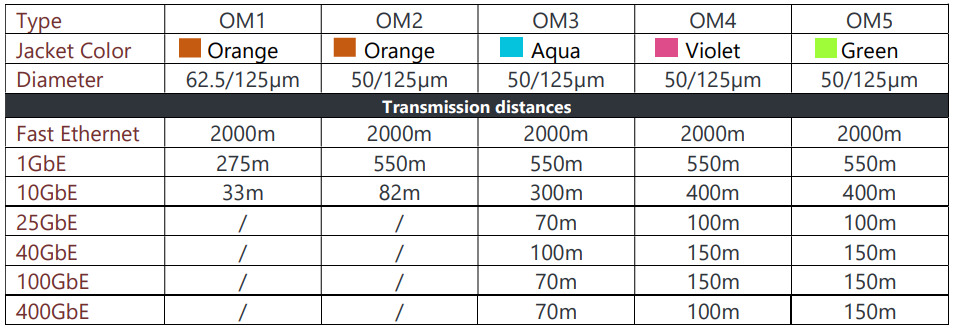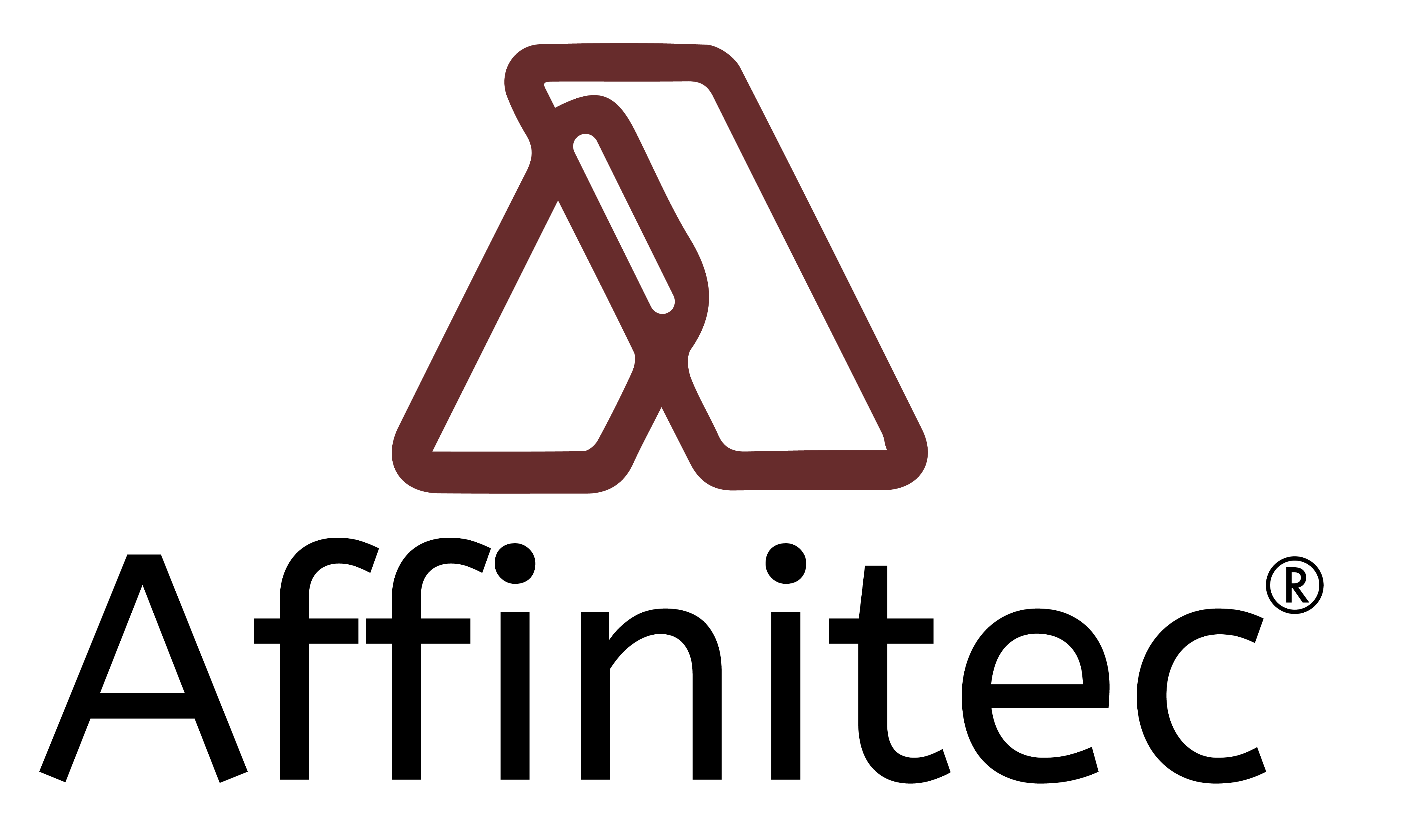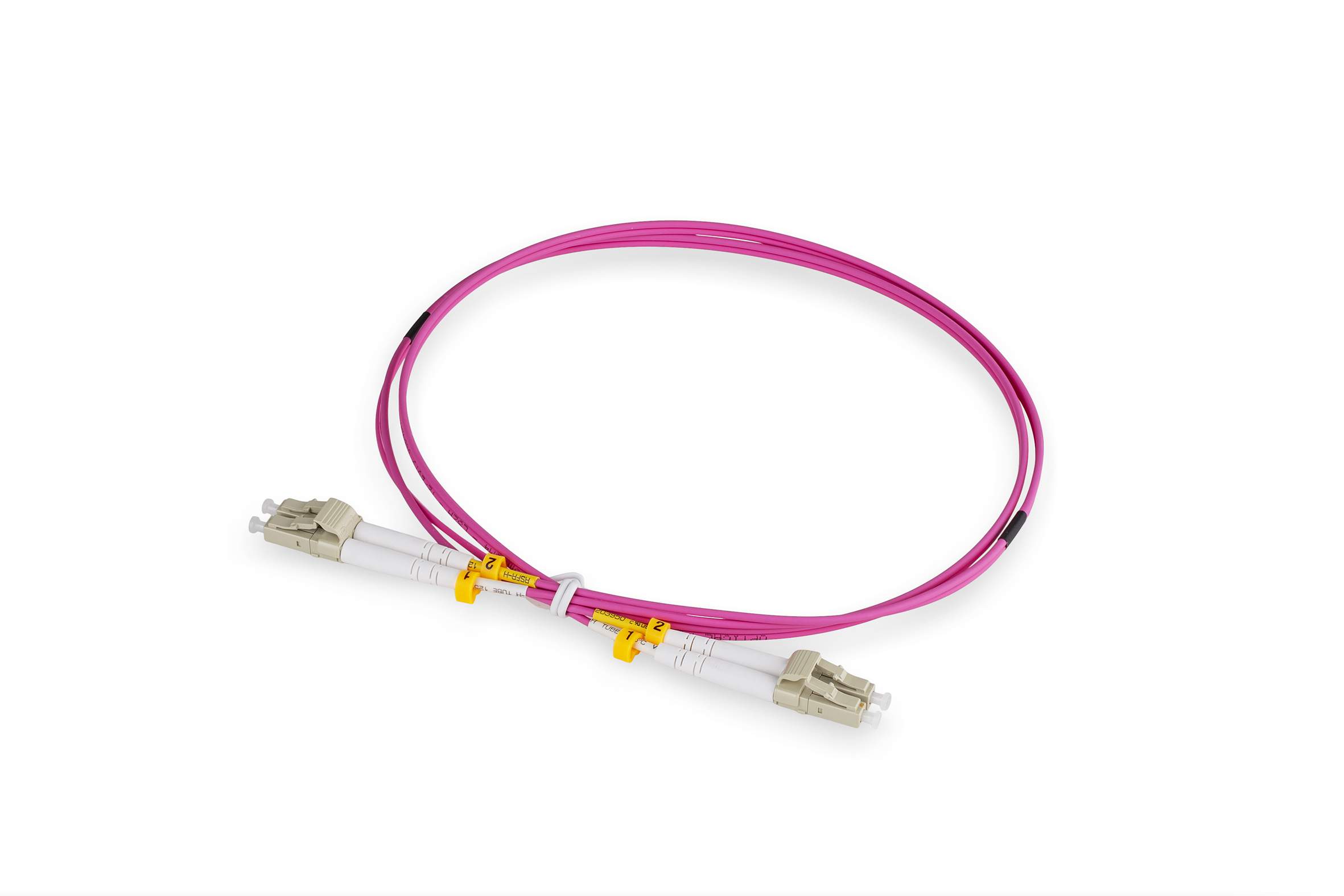Overview of Multimode Fiber
Multimode fiber is normally used for short distances, but as speeds increases, so does the bandwith requirements. Since the introduction of OM1 (62.5/125) multimode fiber in the 1990s, the market has seen several improvements. Here we will try to give a brief overview of the evolution of multimode fiber, as well as recommendations on what to use today.
The evolution of multimode fiber (MMF)

So what is used today
OM3 and OM4 are the commonly used types that are used. OM1 and OM2 is still requested, for old installations. OM3 and beyond are backwards compatible with OM2, so in these cases, we just recommend to use OM3. OM1 has a thicker core size (62.5um) than OM2 and beyond which has 50um core. So you can mix these fibers, but when you mix the two core-sizes, you will see a high loss.
To answer the question of what to use today, we need to consider the conditions. At the end of the day, a factor which will always play in is cost, and as you move from OM3, to OM4 and further on to OM5, the price will increase.
If you are working with speeds up to 10Gb/s OM3 is the most cost effective solution. OM3 will also be sufficient in many cases where you work with speeds that are based on 10Gb/s lane speed, such as 40Gb/s SR4 and 100Gb/s SR10.
When we move to 25Gb/s speeds , which is also used for 100Gb/s SR4, OM4 is the recommended fiber type to use.
When we start to move to speeds beyond 25Gb/s lane speeds, such as 50Gb/s, which includes 400Gb/s, OM5 is the right choice.
MPO/MTP has been available with OM3 and OM4 fiber, but today we are seeing OM4 being the most popular choice, while the interest in OM5 is increasing. If you are installing an MPO/MTP solution it can in many cases be used continue to serve you well, as your networking speeds increses. For this reason we recommend you to consider this when you choose if you want to use OM3, OM4 or OM5.
We hope that this will help when you are choosing which products you need for your multimode fiber network.
The evolution of multimode fiber (MMF)
- OM1 (62.5/125) was introduced and deployed in the late 1980s. it supports speeds up to 10Gb/s, but with limitations already at 1Gb/s.
- OM2 (50/125) came to the market in the early 1990s and compared with OM1, this enables networks to transmit 1Gb/s up to 550m and 10Gb/s up to 82m.
- In the late 1990s the first laser optimized multimode fiber (LOMMF) was introduced. This is known as OM3 (50/125) and made it possible to reach 300m with 10Gb/s and even to start looking beyond 10Gb/s. It is now possible to support up to 100Gb/s.
- In the late 2000s OM4 (50/125) was introduced. This new type is an improvement of OM3, but developed in order to support transmission with 25Gb/s lane-speeds.
- OM5 (50/125) is the latest development of multimode fiber and is the first wideband multimode fiber (WBMMF) which is able to support short-wave WDM (SWDM) and support speeds up to 400Gb/s.

So what is used today
OM3 and OM4 are the commonly used types that are used. OM1 and OM2 is still requested, for old installations. OM3 and beyond are backwards compatible with OM2, so in these cases, we just recommend to use OM3. OM1 has a thicker core size (62.5um) than OM2 and beyond which has 50um core. So you can mix these fibers, but when you mix the two core-sizes, you will see a high loss.
To answer the question of what to use today, we need to consider the conditions. At the end of the day, a factor which will always play in is cost, and as you move from OM3, to OM4 and further on to OM5, the price will increase.
If you are working with speeds up to 10Gb/s OM3 is the most cost effective solution. OM3 will also be sufficient in many cases where you work with speeds that are based on 10Gb/s lane speed, such as 40Gb/s SR4 and 100Gb/s SR10.
When we move to 25Gb/s speeds , which is also used for 100Gb/s SR4, OM4 is the recommended fiber type to use.
When we start to move to speeds beyond 25Gb/s lane speeds, such as 50Gb/s, which includes 400Gb/s, OM5 is the right choice.
MPO/MTP has been available with OM3 and OM4 fiber, but today we are seeing OM4 being the most popular choice, while the interest in OM5 is increasing. If you are installing an MPO/MTP solution it can in many cases be used continue to serve you well, as your networking speeds increses. For this reason we recommend you to consider this when you choose if you want to use OM3, OM4 or OM5.
We hope that this will help when you are choosing which products you need for your multimode fiber network.

